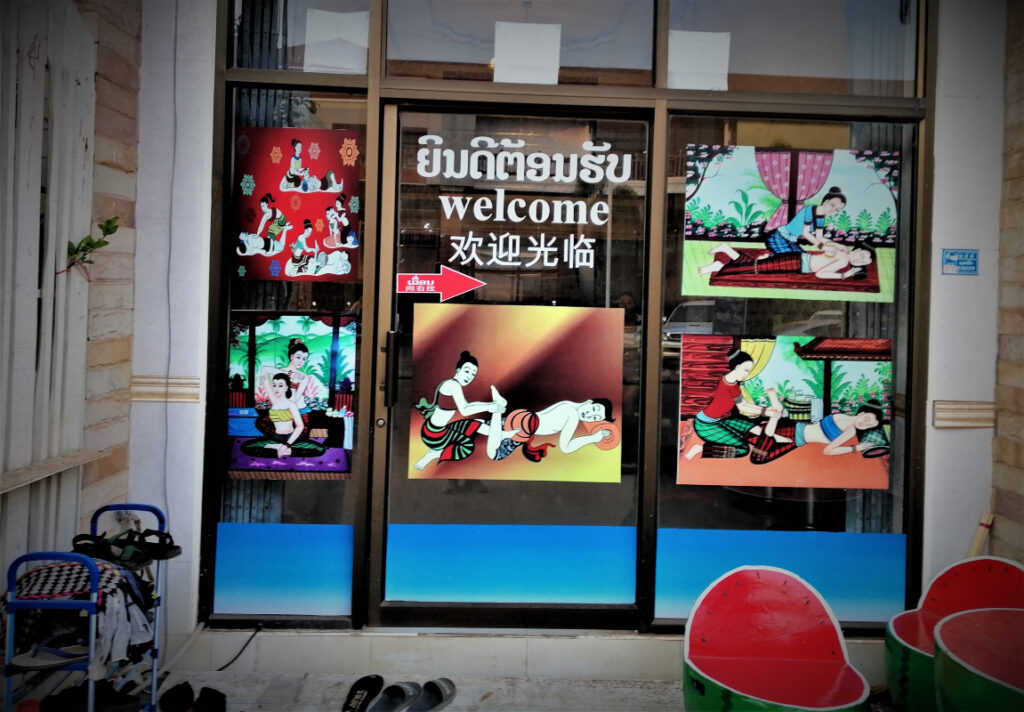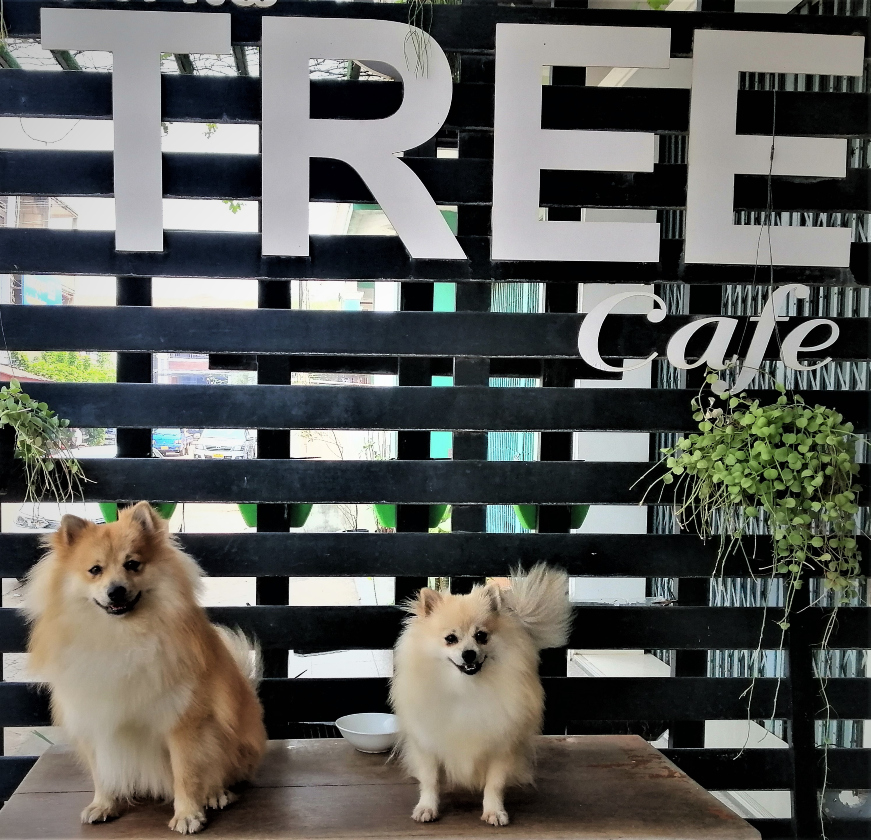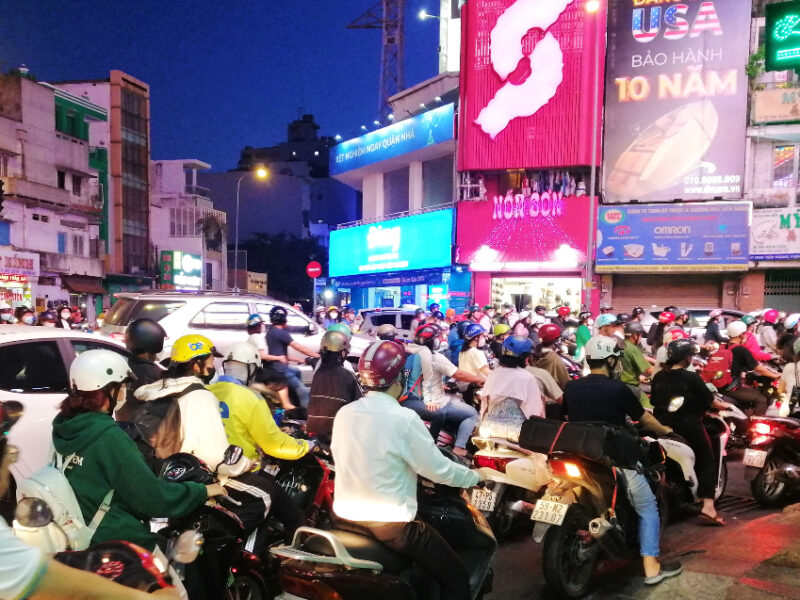I’ve been in peaceful Pakse on the calm Mekong for three weeks, with nine days before the 30-day Lao visa expires.
The original, but loose plan was to stay in Pakse for the full, in-country time allotment. However, during the first few days, the mildly chaotic traffic congestion, burning fragrance in the air, and lack of bearing caused me to rethink staying in Laos’ third biggest city. I thought I’d move on sooner.

There must be extraordinary places to visit outside the main urban center of tropical southern Laos and its widening Mekong.
A week passed, then two, and now three weeks have gone by in Pakse. That first evening was the only time I saw fire. The air hasn’t bothered me too much since. I keep rethinking:
Maybe I’ll skip the stellar sites and stay here in this urban Lao setting for the full 30 days. It’s nice to be in one place where everything is accessible on foot.
The current $8.50 a night abode is clean, comfortable, spacious and wired; exactly what I need. The router is right outside the room’s door. Having solid Wi-Fi is usually a given in this region of our behemoth earth ball.
For me, comfortable accommodation can make or break a place.
This Deal-of-a-Lifetime Has Drawbacks
For a nightly rate, this is one of the best values I ever recall achieving. Nevertheless, It can’t all be positive. There’s an on-premises restaurant where copious beer is consumed. It’s open and utilized until 11 p.m. sharp, every night, like clockwork. The mostly Lao (Thai) music is blared and there always seem to be inebriated people talking loudly over it.
Beer Lao is imbibed. Copious, slow-cooked, flesh-cuisine is consumed. This includes the ubiquitous moo (pork). Pork is the most inexpensive of the big-three land animal food products. Chicken is the next cheapest, while beef and fish are more expensive.

There are also mosquitoes that will find any open piece of skin hanging outside the snug, down blanket. And this is with the air-con turned up to a high level.
It’s a tropically benign reality that ankle and hand itching are a part of life. I have citronella essential oil. I mix it with coconut oil and rub it on my head, face, hands, arms, lower legs, ankles, and feet.
Mosquitoes don’t like citronella, so the oil suffices. But on some nights, I wake up itching my face, head and hands. Then I need to get up and reapply. When that feels annoying, I make it a point to remind myself:
It could be worse. What if these mosquitos were stinging red jungle ants? This isn’t a problem.
Then I emit a faint chuckle and plop back into bed.
Typically I don’t like to kill anything. But when I see a mosquito gliding around the room, I try to clamp it between my hands. I don’t need the stain on my palms but that’s better than another mild bite or more.
Thankfully, the problem has been mostly fixed as the woman of the house who cleans the room and changes the sheets every morning now also fumigates the room. So the mosquitoes have been sparser.
Normally I’d tell them not to change my sheets daily. However, there have been nights when I’ve woken up in a pool of sweat. I attribute this to daily massage and sauna therapy.
Massage Therapy Culture
I’ve created a daily makeshift spa experience. There are several massage shops scattered around, mostly in the main area. Massage has been an intricate part of Lao culture for centuries.

Due respect ought to be paid to the ancestors responsible for this culturally electrifying magic. The therapists know physiology and how to dig right in to the skin. They perform physiological wizardry, that induces euphoric fuzziness.
I have huge respect for massage therapists for their knowledge of the body and the contribution they make to the human experience. In my opinion, these special beings here in Laos deserve a cash-tip in hand for performing a gigantically generous deed. Give it to them, not the guy on the street who wants money for nothing. This is my subjective stance.
In the last three weeks, I’ve had a therapeutic massage almost every day. This is probably equal to all the massages I’d had in my lifetime prior to arriving in Pakse. Thusly, I’ve become more interested in massage therapy and its health benefits.
Sauna Culture
Most if not all Lao cities and towns have local sauna services. I’ve been to five other Lao cities. They all have at least one sauna that’s open in the late afternoon and into the evening.
The fee includes a pair of shorts, towel, key to a locker, shower access and unlimited hot herbal tea.
The sauna/steam I use in Pakse has three barbells for lifting weights. This is the male side. Most saunas in Laos are segregated by gender. At this particular one, the whole outside area is divided.

Lao saunas are mostly for locals and not a tourist endeavor. This gives the outsider immersion in the culture, while feeling fantastic as the heavenly heat penetrates the skin.
Since visiting this sauna several times, I’ve developed an enhanced interest in the health benefits of body heating.
Café Culture
There’s no shortage of coffee shops serving local coffee from the nearby Bolaven Plateau, a place of altitude I hope to visit soon. So far, in three weeks, I haven’t travelled beyond the central city limits of Pakse. I’ve been able to walk to coffee shops, restaurants, massage parlors, and the closest sauna/steam facility to my dwelling.

Tree Cafe is owner run. Here are his two cute puppies he recently purchased across the border (three hours away) in Ubon Ratchatani, Thailand. They seem to always be there when he’s open between 6:30 a.m. and 3:00 p.m. They love people and always want to play.
Living sans vehicle even for a day is a win for me, never mind, three weeks. So far in Pakse, I’ve managed to walk everywhere despite buzzing traffic and sometimes lack of sidewalks.

Drivers in Laos and Thailand seem to have enough respect for pedestrians. There are often no lights to help a person cross a street, so the cars will almost always slow down or stop. Nevertheless, we still need to drift the streets and sidewalks with great caution.

Although rare in Pakse, compromised pavement must be taken into consideration. I would not condone walking around inebriated after dark.
There are many cafés in walking distance around the main area of town. If a location is too far to be reached on foot, there are plenty of motorcycles, motorcycles with side cars, tuk tuks and taxis. They’ll be happy to have your business.

There’s language left from the French occupation from 1893 to 1953. Chinese is getting more popular; while English is the second language. A Chinese person typically communicates with a Lao person in English, via a phone translator or with makeshift sign language.

Most establishments serve food, while a few provide only drinks. All have good Wi-Fi and world-class coffee, tea and cacao drinks. They need to know if you want your coffee or tea, hot (hon) or cold (yen).
Language Alert: hon (hot), or yen (cold). Some know these words in English, some don’t. A little Lao or Thai can go a long way. The two languages are similar. Most Lao people understand Thai.
Other than Café Amazon, which I’ve noticed in every Thai and Lao city, most of the shops in Pakse are mom & pops with unique characteristics. This lack of monopolization is logical and more ideal for society as a whole.
Culturally Pleasant and Polite People
Other than the innocuous and nice-enough tuk tuk (side-car)drivers who need to put food on the table, no one bothers you.
Since Pakse isn’t a place that sees swarms of tourists, you’ll get excited waves and hellos from children. I always make it a point to smile, say hello and wave back.
It’s also common to get smiles from adults. I just smile back. Maybe it’s the calm climate. Perhaps it’s the peaceful and respectful, ancient attributes. Buddhism also plays a roll.
Whatever the reasons, people are generally polite and calm (emotionally intelligent).

Unlike in Chiang Rai and Luang Prabang, I haven’t been temple touring in Pakse. So far the only complex I’ve visited is Wat Prabat, as it’s just minutes from where I’m staying. I don’t feel templed out, things have just happened this way. Pakse is not lacking in terrific temples, either.
There tends to be a lofty language barrier as the majority don’t seem to speak English. The younger generation can brainstorm and remember numbers and expressions when you’re paying for things.
You will find English speakers working in the tourist trade. They can produce interesting conversation if they have time to spare from their busy work and life load.
Laid-Back Urban Vibe
Pakse doesn’t seem to be on any tourist path per se. It’s a bit out of the way for many travelers. Tourist services are available. There are always drifters around using the city as a hub for 4,000 islands in the Mekong, the Bolaven Plateau, and surreal sites like Wat Phu, in Champasack.
There are a few expats living in Pakse.
Not Over Commercialized
It’s been wonderful to not step into a vehicle for three weeks. Even though world class sites are short journeys away, I enjoy the routine of having an array of café options in the morning, and sauna and massage on most afternoons/evenings. After sauna time, I look forward to the electrifying escape of a magical massage.
Because I’m becoming enamored with southern Laos, I decided to visit the Foreigner Control 0ffice in the city. There I got a 30-day visa extension. COST: 635 k Kip ($38).
The current loose, wide-open plan is to venture somewhere outside of Pakse the day after tomorrow.
Daily Costs in Pakse
| EXPENDITURE | DAILY COST |
| Accommodation: | 140 K Kip ($8.50) |
| Sauna: | 20 K Kip ($1.25) |
| Massage: | 90 to 200 K Kip ($5.50 to $12) depending on massage |
| Food & Drinks: | 220 K Kip ($13.30) rough average eating very well |
| Lao Visa: | $40 to enter Laos for 30 days – $1.34 per day |
| Walking Everywhere: | Free |
| TOTAL | 510 K Kip + $1.34 = $31.94 on average daily expenditures |
Have you been to Pakse? What are your thoughts? Feel free to leave a comment below.
Photos from Pakse, on the tropical Mekong.



Tusen takk for long the interesting description of Pakse, and all the great pictures.
Wow! I want to travel there.
Hi TERI! Yeah, seriously, I completely recommend it. TIP: Go to Skyscanner and be flexible with the day you wanna fly and keep at it, when you find the dream deal: YVR to BKK I guess. From Bangkok I suggest slow, dirt-cheap rustic trains with big wide windows open for making your way to Laos. The land border crossing is super-relaxed and easy. Or, simply fly from BKK. I flew one-way from Orlando, FL to Bangkok for $605. I was thrilled to get that price.